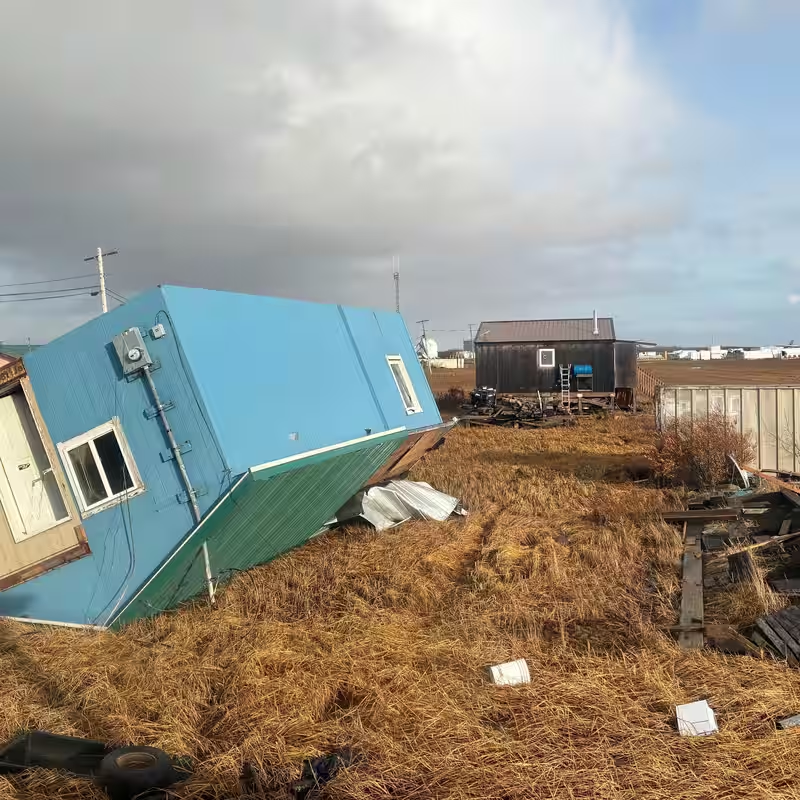Table of Contents
- Unprecedented Storm Devastation in Western Alaska
- Evacuation Reality: No Return for Over a Year?
- Governor Dunleavy’s Plea for Federal Aid
- Human and Cultural Toll on Remote Villages
- What’s Next for Recovery?
- Sources
Unprecedented Storm Devastation in Western Alaska
The remnants of a powerful typhoon slammed into western Alaska earlier this month, unleashing catastrophic flooding, wind damage, and infrastructure collapse across multiple remote Native villages. In the aftermath, Alaska Governor Mike Dunleavy has issued a sobering warning: full recovery could take up to 18 months, leaving hundreds of evacuees displaced for well over a year.
This isn’t just another storm—it’s one of the worst natural disasters to hit the region in decades. With limited road access, extreme weather, and fragile supply chains, the logistical nightmare of rebuilding is unlike anything faced in the Lower 48.
Evacuation Reality: No Return for Over a Year?
For residents of villages like Nome, Kotzebue, and smaller communities along the Bering Sea coast, the storm didn’t just destroy homes—it wiped out critical infrastructure: water systems, power grids, airstrips, and even community centers that double as emergency shelters.
“We’re looking at a recovery timeline of 12 to 18 months before people can safely return,” Governor Dunleavy said in a press briefing. “This isn’t just about patching roofs. It’s about rebuilding entire lifelines from the ground up.”
The storm recovery effort is further complicated by permafrost thaw, limited construction windows (only a few summer months are viable for heavy work), and soaring material costs due to the region’s isolation.
Why 18 Months? A Breakdown
- Phase 1 (0–3 months): Emergency shelter, food, medical aid, and debris removal.
- Phase 2 (3–9 months): Temporary housing, restoration of water and power, and damage assessments.
- Phase 3 (9–18 months): Permanent reconstruction of homes, schools, clinics, and transportation infrastructure.
Governor Dunleavy’s Plea for Federal Aid
Recognizing the scale of the crisis, Governor Dunleavy has formally requested a major disaster declaration from President Donald Trump and the Federal Emergency Management Agency (FEMA). Such a declaration would unlock critical federal resources—funding, personnel, and logistical support—that Alaska’s state budget simply cannot provide alone.
“Alaskans are resilient, but we can’t do this alone,” Dunleavy stated. “We need the full weight of the federal government behind us.”
Early estimates suggest damages exceed $300 million, with costs expected to rise as more remote villages are assessed by air and snowmobile.
Human and Cultural Toll on Remote Villages
Beyond bricks and mortar, the storm has disrupted centuries-old ways of life. Many of the affected communities are predominantly Iñupiat and Yup’ik, where subsistence hunting, fishing, and communal living are central to cultural identity.
With homes destroyed and food caches ruined by floodwaters, families are not only displaced—they’re disconnected from their seasonal rhythms and traditions. Elders, in particular, face heightened health risks in temporary shelters far from home.
“This isn’t just about buildings,” said Vera Metcalf, a tribal leader from Nome. “It’s about whether our children will know how to live on this land again.”
What’s Next for Recovery?
FEMA teams are expected to arrive in the coming days to begin damage assessments. Meanwhile, the Alaska National Guard has been deployed to assist with evacuations and supply drops.
State officials are also coordinating with tribal councils to ensure recovery plans respect Indigenous land rights and community input—a lesson learned from past top-down disaster responses.
As winter looms, time is running out. For now, hundreds of Alaskans remain in emergency shelters in Anchorage, Fairbanks, and even out-of-state—uncertain when, or if, they’ll return to the villages they’ve called home for generations.




